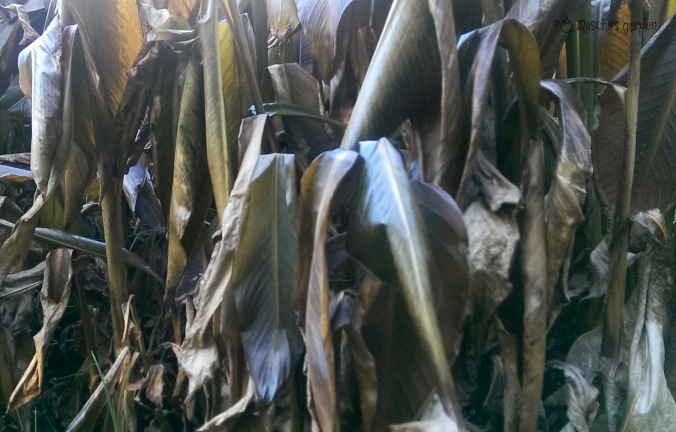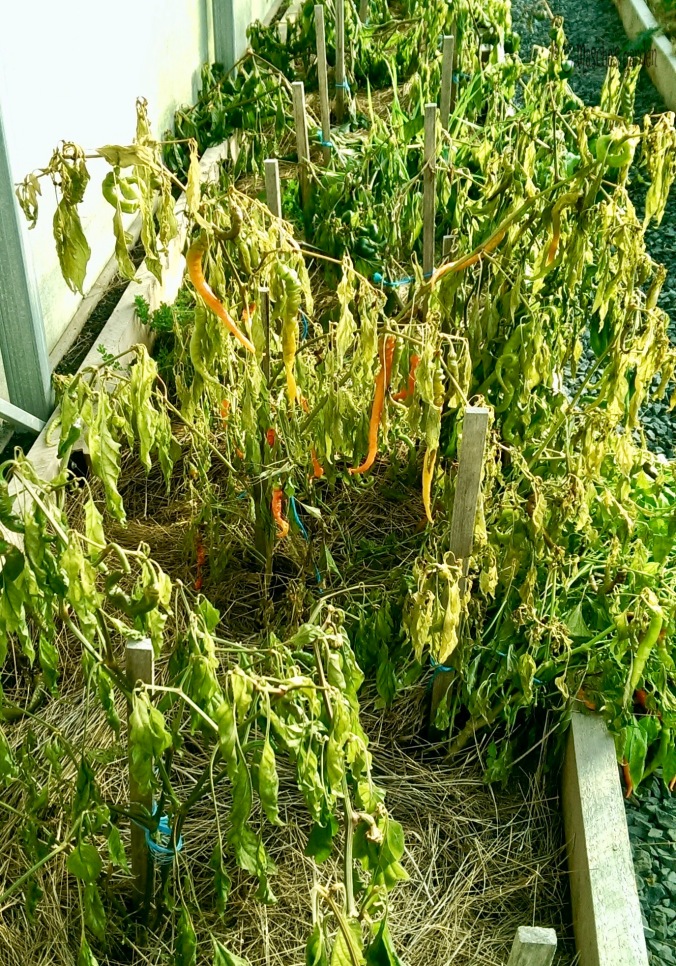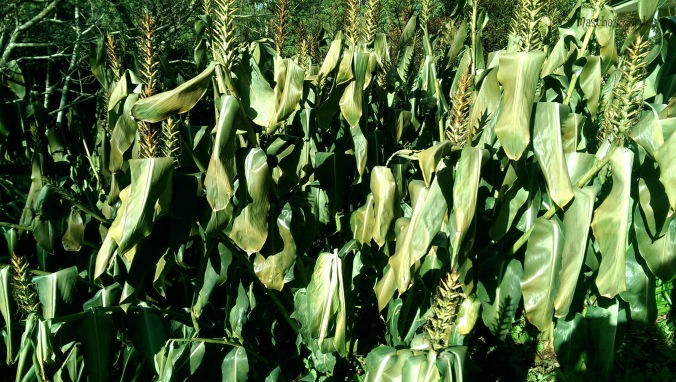
Although surviving to mid-winter in the protected environment of the poly tunnel, overnight temperatures of -5ºC were too low for these capsicum plants as they finally succumbed to frost.
We recently experienced three consecutive nights where the temperature dropped below 0ºC, yes winter is here and with it comes frost. While frost is welcomed by some plants in my garden such as kale, broccoli, carrots, parsnips and cabbages, which taste much better after a frost and also by our apple trees and berry plants, which need a period of cold weather to set good fruit the following season. Other plants, such as the last of our warm season vegetables and our more temperate, sub-tropical plants can suffer if not protected from frost.

Typical blackened, droopy foliage of a frost damaged plant… in this case Arrowroot.
When temperatures drop below 0ºC the water inside a plants cells freezes and expands causing the cell walls to rupture, creating droopy often blackened looking foliage. Young plants and those with large soft leaves are more susceptible to frost damage. Plants which are classified as frost hardy have adapted to cope with frost by having small, tough, leathery or dense foliage which is more resistant to damage from frost; while other plants are protected by being deciduous and dormant during winter.

The foliage on this Pineapple sage planted in a frost pocket had no chance surviving three nights in a row below freezing, but will bounce back from new growth produced in spring.
To minimise the damage frost can do in your garden there are some measures you can take. Frost often settles in low lying areas, so don’t plant frost prone plants at the bottom of a slope or uphill from a thick hedge or wall which can trap cold air coming down the hill and create a frost pocket. Here in Melbourne, a north facing brick or stone wall can act as a thermal mass, radiating warmth for frost sensitive plants planted near it. A large body of water can also act as a thermal mass, so having a large pond or dam can provide some protection for plants nearby.

Even the chillies in the poly tunnel got chilly!
Large plants can be protected by covering them with hessian, horticultural fleece, old sheets or weed matting on nights when frosts are likely. Small plants or seedlings can be protected by placing an empty pot plant over them at night, but make sure to remove any covers during the day. If it’s too late and frosts have already damaged your plants don’t be tempted to cut the unsightly and damaged foliage off straight away. The damaged foliage can protect the rest of the leaves and any new growth underneath from further frosts, potentially saving the plant. Prune frost damaged plants once there is no more risk of frosts (which here in Melbourne may not be until mid spring). After a frosty night, wetting the foliage of plants with a hose early in the morning, before the sun is out, can slow the thawing process and therefore minimise frost damage too.

Ginger Lily damaged by frost.
